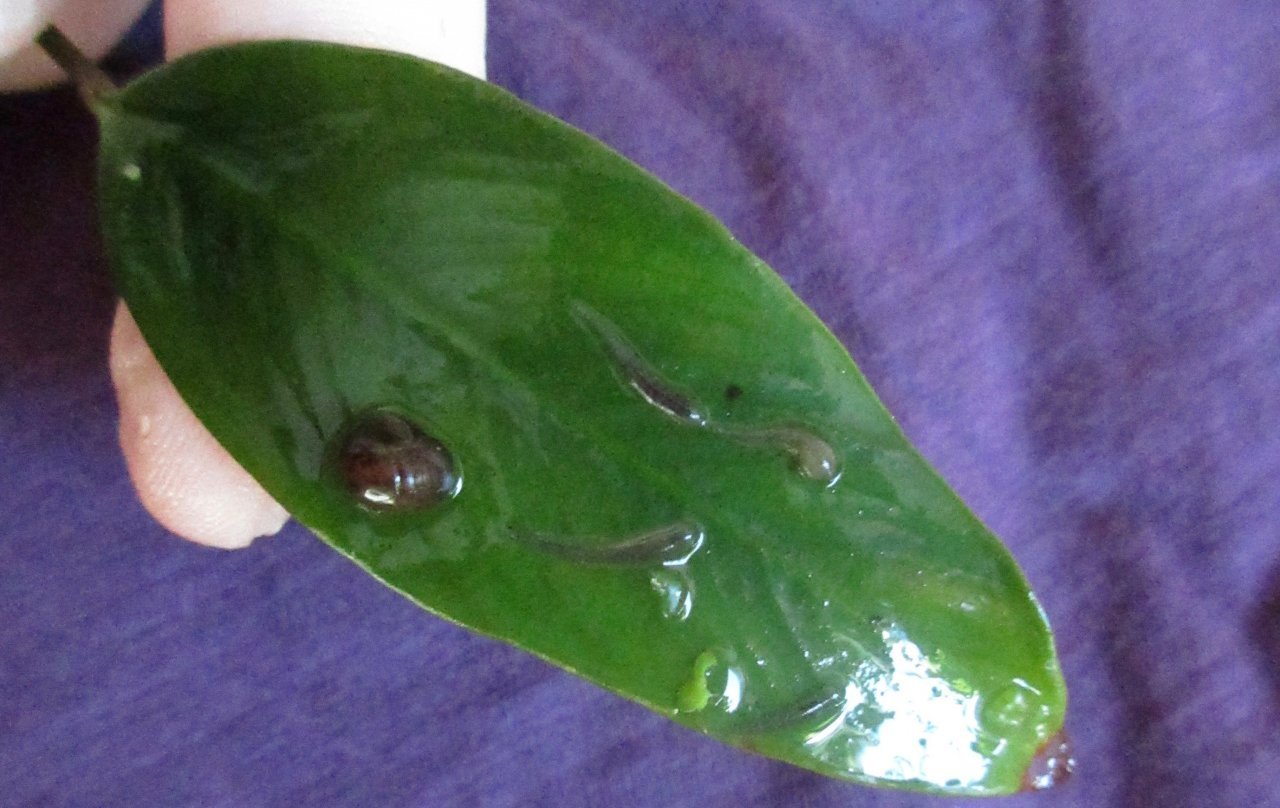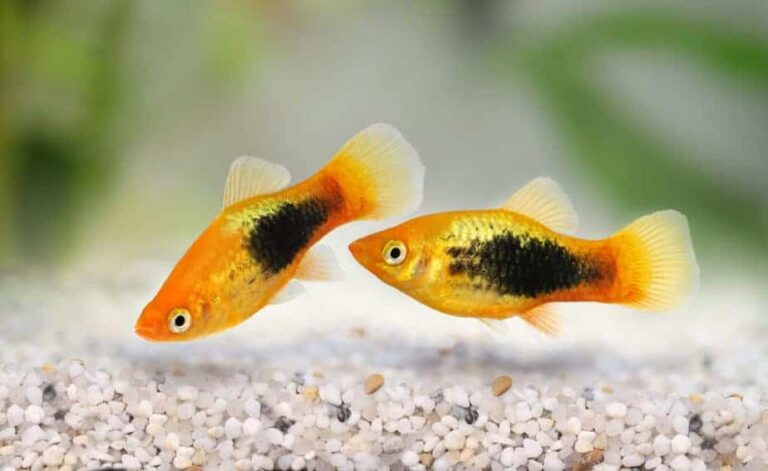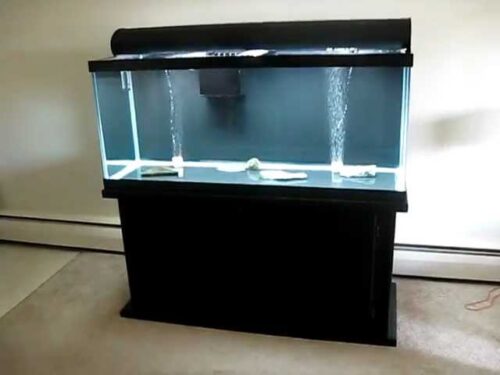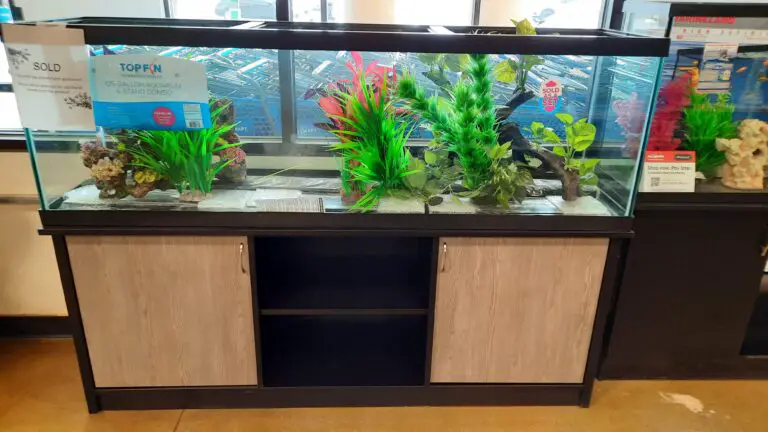How to Get Rid of Leeches in Aquarium? (12 Tips for Solution)
To get rid of leeches in an aquarium, start by removing any dead or decaying matter from the tank. This will reduce the amount of food available to them and make it harder for them to survive. Next, manually remove any visible leeches with a net or tweezers.
If that isn’t possible, try using a chemical such as potassium permanganate to kill them off. Make sure you use gloves while doing so and follow all safety precautions when handling this type of chemical.
Finally, install some preventative measures such as installing physical barriers like mesh screens over open-top tanks or adding fish that feed on leeches into your tank’s ecosystem.
These methods should help keep your aquarium free from these pesky pests!
- Step 1: Remove all fish and other aquatic organisms from the aquarium. This is necessary to make sure that no harm comes to them while attempting to get rid of leeches in an aquarium
- Step 2: Check all plants, rocks, and other decorations for any signs of leeches. If any are found, remove them immediately and discard them in a sealed plastic bag or container
- Step 3: Clean out the entire tank with dechlorinated water and scrub it thoroughly with a sponge or brush to ensure that all traces of leech eggs have been removed
- Step 4: Change out 50% of the existing water with fresh dechlorinated water. This will help dilute any remaining residuals from the cleaning process as well as provide a more hospitable environment for your new occupants moving forward
- Step 5: Replace only half of the filtration media each time you do a partial change-out on your filter system so there is still some beneficial bacteria present in order to keep ammonia levels at bay once everything has been reintroduced into your tank atmosphere again
Types of Aquarium Leeches
Aquarium leeches are a type of aquatic worm that can be beneficial in many aquariums. Leeches consume debris, uneaten fish food, and detritus in the tank which helps to keep the water clean and healthy for its inhabitants. Many species of leech are available; some will only feed on dead material while others may actively hunt down live prey like small crustaceans or fish.
In addition to their scavenging capabilities, certain species of aquarium leech can also help with disease control by consuming parasites or helping wounds heal faster with their anticoagulant saliva.
How to Get Rid of Snail Leeches?
Getting rid of snail leeches can be a challenge, but there are several steps you can take to reduce their population in your pond or lake. First and foremost, ensure that all aquatic vegetation is removed from the water source as this provides food for snails which in turn attract leeches. A small electric fence around the perimeter of the pond or lake may also be helpful in keeping snails away.
Additionally, using products designed to kill off snails such as copper sulfate will help reduce their numbers. Finally, regular maintenance such as vacuuming and draining can help keep populations low by removing any excess organic material that could provide sustenance for leeches and other pests.
Snail Leech Aquarium
A snail leech aquarium is an interesting and unique way to introduce aquatic creatures into your home. Snail leeches are found in many fresh water habitats around the world, and they make a great addition to any tank or aquarium. These slow-moving critters add movement and color to their environment, as well as provide a natural filtration system for your fish tank by eating algae, detritus, and other small organisms.
They can also help aerate the water by stirring up dirt particles from the bottom of the tank.
Snail Leech Dangerous
Snails and leeches are both small aquatic creatures, but they can be dangerous to humans. Snails carry parasites that can transmit diseases such as schistosomiasis, which is caused by a parasitic worm. Leeches have been known to cause anemia due to their ability to suck blood from their hosts.
While neither creature poses an immediate risk of harm, it’s important for people who spend time in the water or outdoors to take precautions against them by wearing protective clothing and avoiding contact with them.
Small White Leeches in Aquarium
Small white leeches are an unwelcome visitor in any home aquarium. These parasites may enter your tank via live plants, fish or other aquatic life from outside sources, and will feed on the blood of both fish and invertebrates living in the tank. To keep these pests under control, it’s important to regularly inspect your tank for signs of them, quarantine new arrivals and treat with medications as needed.
Will Leeches Kill My Fish?
No, leeches will not kill your fish. While it may be unnerving to see a leech attached to your fish, these parasites will typically fall off on their own without harming the fish in any way. However, if you are concerned about the health of your fish or want to remove the leech sooner rather than later, you can use tweezers or a similar tool to safely detach them from the body of your fish.

What Kills Leeches in Aquarium?
Leeches are a common and often unwanted presence in aquariums. Fortunately, there are several ways to get rid of these aquatic pests without harming your other fish or plants. One of the most effective methods for killing leeches is introducing predatory mites into the tank. These tiny insects feed on leeches, so releasing them into the water can quickly reduce their numbers.
Another option is to use an anti-parasite treatment such as potassium permanganate or malachite green. Although this should be done with caution, as some treatments may also harm your fish if not carefully monitored.
Finally, you could try increasing the temperature of your tank slightly over a few days; leeches cannot tolerate warm temperatures and will usually die off within a few days if exposed to higher temperatures.
What are the Tiny Leeches in My Aquarium?
Tiny leeches in aquariums can be a common problem for many fish owners. These small creatures are typically less than an inch long and look like little worms, but contain suckers that they use to attach themselves to the sides of the tank or other objects inside. While harmless to humans, these tiny leeches can cause problems for your fish if they become too numerous.
They feed on the blood and tissue of their hosts, which in this case is your beloved aquarium dwellers! Although it’s possible to manually remove them with tweezers or a net, it’s not always practical due to their size and quickness. The best way to get rid of them is by using chemical treatments specifically designed for aquatic pests such as copper-based solutions or products containing malachite green.
Additionally, you should make sure you maintain proper water quality parameters (pH levels, temperature) as well as good nutrition for your fish so that there isn’t anything tempting enough for these parasites to come around in the first place!
What Fish Will Eat Leeches?
Many people are surprised to learn that fish will eat leeches. This is because most of us associate the slimy creatures with sucking blood from other animals, not being eaten by them. But while it may seem strange, there are actually a variety of fish species out there that enjoy feasting on leeches as part of their diet!
The list includes many types of freshwater and saltwater gamefish such as bass, pike, catfish, trout and even some species of shark. In addition to these bigger predators, some smaller bottom-feeding fishes like sculpins and minnows have also been known to chow down on leeches when they come across them in the wild.
So if you’re looking for an answer to the question “what fish will eat leeches?” then your search is over, there’s a wide range available for you to choose from!
Are Leeches Harmful to Fish?
Leeches can be both beneficial and harmful to fish, depending on the species of leech. While some leeches feed on decaying matter in ponds and rivers. Others will attach themselves onto the bodies of fish and suck their blood, which can cause harm or even death. An infestation of these parasitic leeches can wreak havoc on an aquatic ecosystem by reducing the numbers of small fishes present in a given area.
Additionally, if left unchecked for long enough, this type of parasite could eventually deplete entire populations due to its voracious appetite for blood. Fortunately however there are ways that we can protect our fish from these parasites.
Such as introducing plenty of predatory fish into a pond or river to keep them at bay. In addition, it is important not to introduce any new species into an existing habitat without first checking whether they might carry with them any potentially dangerous parasites like leeches which may then go on to threaten local fishes’ health and wellbeing.
Planaria TRAP, worms, or Leeches In your Aquarium, and how to remove them. Won’t kill nerite snails!
Conclusion
In conclusion, it is important to take the appropriate steps when removing leeches from an aquarium. Taking preventative measures can help avoid future infestations. Cleaning regularly and keeping plants out of the tank are two key ways to keep them away.
Additionally, using a fish medication can be used as a last resort if all else fails. By following these tips, you should be able to get rid of leeches in your aquarium and create a healthier environment for your fish and other aquatic life!





